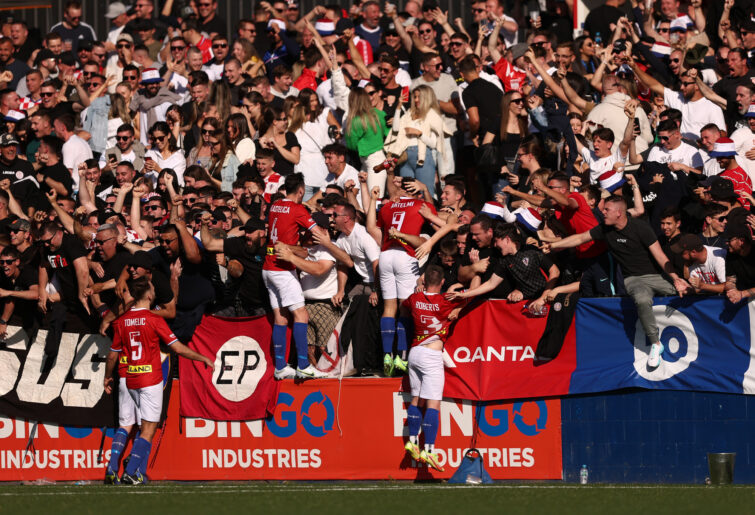Malcolm Bourke
new author
Roar Rookie
Yesterday, Football Australia revealed the teams that will occupy the new National Second Tier (it should be the B-League, but I digress). And, as with any other decision that is made about the beautiful game in this country, the eight teams selected immediately caught the disdain and ire of many a fan group.
The chorus of Aussie football tragics took like a duck to water in putting inverted commas around the word “national”, as complaints were made about the involvement of two out of six states in the eight teams to found the competition.
Football Australia shot this down by saying that an additional two-four teams would be included in the NST before the 2025 start date.
So, what should the additional teams be? In an ideal scenario at this point, the NST would have 12 teams. The eight already revealed are:
– APIA Leichhardt FC
– Avondale FC
– Marconi Stallions FC
– Preston Lions FC
– South Melbourne Hellas FC
– Sydney Olympic FC
– Sydney United 58 FC
– Wollongong Wolves FC
Here are the other four teams that should be added to the NST by 2025.

Patrick Antelmi of Sydney United 58 FC celebrates scoring a goal. (Photo by Mark Metcalfe/Getty Images)
One of the two merger bids, Brisbane United is a merger of Brisbane Strikers, Wynnum Wolves, and Virginia United. Whilst it does not have the storied history and community reputation that an NST would benefit from, Brisbane – and Queensland as a whole – could benefit strongly from a more community-oriented football team on a national stage.
As a merger, it would have more sound financial backing than a Brisbane City NST team, and with the agreement of Football Queensland, could slot right into the NPL system if relegation was on the cards.
Brisbane is a city that needs a new kid on the block to rejuvenate football in the city, and Brisbane United could be the perfect candidate for doing so.
A former NSL powerhouse, Adelaide City would check another state off for the NST to be truly “national”. Some of Aussie football’s legends have donned the Zebras shirt – Ross Aloisi, Carl Veart, and Tony Vidmar, to name but three.
The antithesis to Brisbane United in some ways, the Black and Whites have a history to be proud of, with three national titles under their belt. With an expansive supporter base, Juve are well placed to compete on a national stage again.
Adelaide United drew an average of 12,000 to their home games in 2022/23, and the potential for a derby is exhilarating for South Australian football.

(Photo by Visionhaus/Getty Images)
The second merger, Football South Australia, is a merger of Campbelltown City, North Eastern MetroStars, and West Torrens Birkalla. Quite successful in the state NPL, all three clubs have a history to be proud of.
A third professional club in the state would allow football to begin to build a challenge to AFL’s dominance. Obviously, this is the only NST club that still requires a name. Since City and United are already taken, conventions could be taken from teams such as Wigan, Charlton, and Madrid – Adelaide Athletic AFC has a ring to it.
Whilst Canberra will now be getting a team in the A-League men before the start date of the NST, I still think that the nation’s capital shouldn’t be missing out – and Canberra Croatia is a very successful team, with a reputation throughout the world of football in Canberra, so much so, that many a football score app give them the moniker of “Canberra FC” when it comes to cup time.
They dominate the NPL in the ACT, and are well placed to go toe-to-toe against the rest of the NST.
With the addition of these four teams, a lot of Aussie football fans’ concerns are alleviated. The number of jurisdictions involved goes from two to five, and the amount of game-weeks a season goes from the current 16 to a much more respectable 22, with the addition of a finals series.